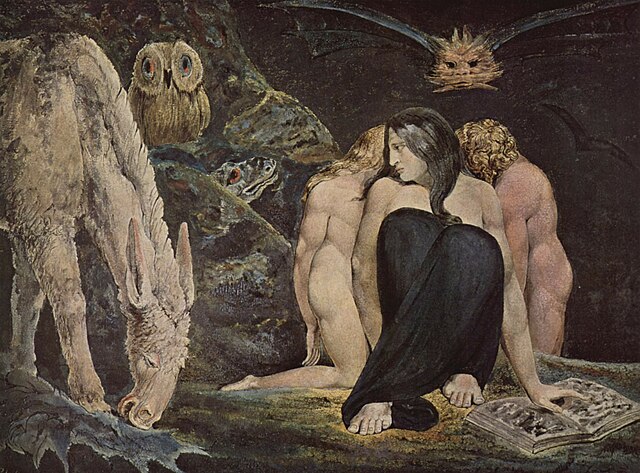Orc is a proper name for one of the characters in the complex mythology of William Blake. A fallen figure, Orc is the embodiment of rebellion, and stands opposed to Urizen, the embodiment of tradition.
Orc emerges from creative fires to challenge the forces of imperialism in plate 12 of America a Prophecy
Some scholarship has identified the Snake on the front of "Europe a Prophecy" as another form of Orc, representing "the personification of revolutionary energy". This is copy B of the poem, printed in 1794 and currently held at the Glasgow University Library.
The child Orc with Enitharmon and Los, in Blake's A Large Book of Designs. Produced c. 1796, this print is copy A of object 2 in the copy currently held by the British Museum.
Enitharmon is a major female character in William Blake's mythology, playing a main part in some of his prophetic books. She is, but not directly, an aspect of the male Urthona, one of the Four Zoas. She is in fact the Emanation of Los, also male. There is a complex verbal nexus attached. The Zoa Tharmas has emanation Enion, and Eni-tharm(as)-on is one derivation of her name. That should perhaps be read in the inverse direction though, as a construction of the Tharmas/Enion pair's names. Within Blake's myth, she represents female domination and sexual restraints that limit the artistic imagination. She, with Los, gives birth to various children, including Orc.
The Night of Enitharmon's Joy, 1795 William Blake




